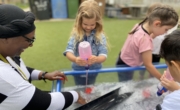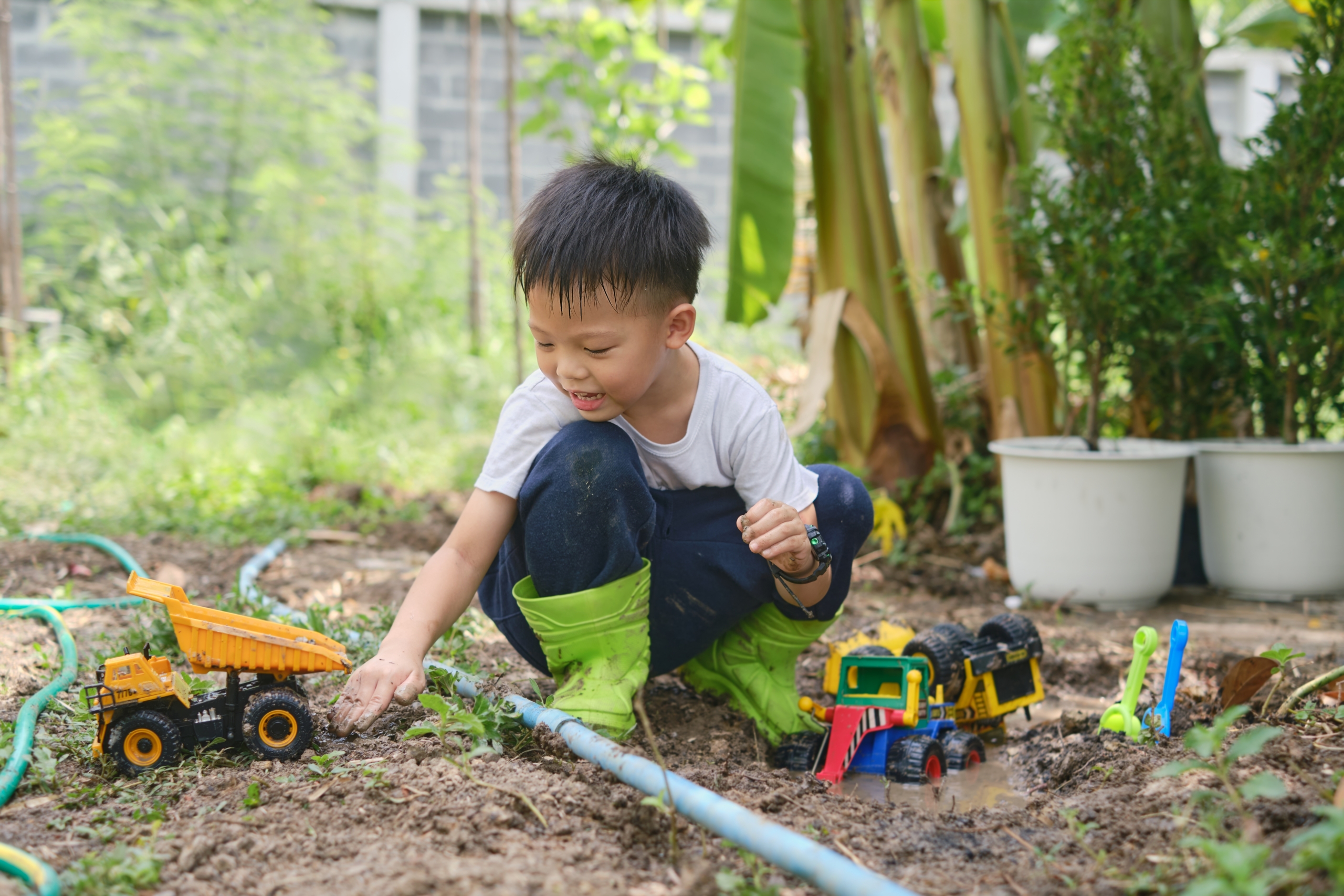Through our partnership with Fisher-Price™ Play Lab we have been sharing how different types of play helps early years child development.
Christmas is a magical time, and we know it can also be very busy. Here we guide you through some baby sensory activities that are super easy to do at home, and are very soothing for babies who can become overwhelmed with all the Christmas music, lights and chatter and might need some time out.
All you need is you and your baby! We always say you are your baby’s best toy. And at Christmas, there are also often lots of items on hand at home that can be included in baby sensory activities.
What is baby sensory?
- Baby sensory activities engage our children’s senses – their vision, touch, scent, hearing and taste – to help with their development, communication and learning
- This can be through creative play, by massage, tummy time, movement… almost anything!
- Baby sensory activities are simple and easy to repeat at home, and very soothing for children
The benefits of baby sensory
- Playing with your baby and doing sensory activities helps your baby to be happier and healthier
- They increase feelings of warmth and safety for the baby, and build your relationship and attachment
- This play between parents/caregivers and baby also helps to develop their brains by building connections, which also helps babies to develop good mental health
When your baby is ready to play
- Babies give you strong cues when they’re ready to play
- A baby who’s babbling, gazing into faces, smiling, moving their arms and legs, looking at you with bright eyes or making an ooh sound with their lips, is telling you they’re engaged
- This is useful when you’re doing sensory activities as it tells you they are enjoying it; and it’s also a good way of noticing if they are enjoying playing with other family members / friends
- If they are crying, arching their back, fussing, turning their head away, pulling or pushing, whining, closing their eyes or frowning, then this can help to tell you it might be time for them to have some alone time
How can I give them alone time if we’re doing baby sensory together?
- You know how sometimes as adults we’re not tired, but we just need to get away from everybody else? Babies are the same BUT babies aren’t born with the knowledge they’re a separate entity from their mothers… Their sense of self doesn’t develop until 15-24 months.
- This means it’s perfectly possible for your baby to get some “alone” time with a parent there as you’re an extension of them. That’s why you hear a lot of parents say “I can’t put them down… They want to be on me all the time” … When you think about it in this way it makes sense.
Shouldn’t I just let my baby sleep?
- Yes, if that’s what they want, but sometimes children can need downtime without sleep, especially at busy times like Christmas. If your baby does want to sleep they will let you know by closing their eyes, yawning, or looking sleepy
Baby Sensory Activities
The best activities for baby sensory are those that encourage babies to use one or more of their senses and where parent and baby have eye contact or communicate with each other in some way
- Christmas Crinkles
- A great activity to do with your baby is to explore something shiny and crinkly together, like Christmas tinsel. You can also use a foil or sensory blanket for this, or anything that is both shiny and crinkly!
- If you are using tinsel, you need to supervise your baby carefully when you are touching or holding the tinsel, (because of the wire inside, and because they might try to put it in their mouth).
- The best way to do this safely is to hold it yourself and show it to them, or gently touch it on the back of their hand. As you crinkle the tinsel, they will be looking at the shiny tinsel and how it catches the light and listening to the crinkling sound (.
- Exploring together with lots of encouraging sounds, talk, and eye contact will naturally engage your baby and discovering joy together is an amazing way to build the connection between you and your child.
- Christmas lights
- Sit with the baby out of reach of the lights and where they’re not too bright, so you can snuggle up and bond as you enjoy the soothing lights and patterns.
- Lots of Christmas lights twinkle and, besides being enjoyable to watch, can help with the development of the rods and cones at the back of the eyes.
- If you get lights that flash in sequence it can also encourage them to develop their visual tracking ability – it’s the same thing GPs test for in their surgeries when they get children to track their finger.
- As with tinsel plenty of encouraging sounds and talk will build a connection with your baby.
- Jingling Bells
- Bells are essential to the feel of Christmas, which is excellent as they’re very common in baby sensory. It’s a nice, well-rounded sound that’s not incredibly loud. We would encourage parents to get their children in a quiet room so that this is the loudest sound they can hear.
- It’s also very versatile – it can be used to get them to sleep or, if your baby is feeling active and playful, they can take the lead. Children can reach out and grasp from as early as four months, which can lead to a revelation where you shake a baby toy that makes a jingle in their eye line and then… magic!
- If using a toy with a jingle or rattle that is intended for babies to hold they can take the bells and make the sound themselves! You can then pass the baby toy between you in what we call “serve and return” interactions, where you pass it to them when they indicate they’d like them. This mirroring builds the foundation of later communications and is also important for bonding. You’re saying “if you ask for me I’ll be here for you”.
- As with lights above, moving the bells around will encourage them to track the sound as moves round, which will come in handy later when they’re following sound and conversations. If they’re also lying on their back or tummy the neck movement can also help develop gross motor skills.
- Baby Massage
- Baby massage is a huge part of baby sensory and it’s an important part of the touch element as It’s a really powerful way to communicate real love.
- There are lots of guides online – like here - but it’s the touch that matters.
- It’s great for physical development, encouraging them to stretch their arms and contract them again, and can also help with things like digestion, and can help relieve reflux or colic.
- There’s no real Christmas element to this part, but it’s probably one of the best ways going to relax your child after the hustle and bustle of the communal living room.
- We only recommend plain olive oil or baby moisturiser for baby massage.
- Peekaboo with Xmas wrapping paper
- Serve and return is also a key ingredient of “peekaboo” – possibly the most underrated of all simple children’s games. It does so much!
- As well as all that lovely interactivity we mentioned above it also helps them understand that you’re there even when eye contact is temporarily removed, which helps with their sense of security and can help with reassuring them when parents leave them to sleep
- At baby sensory classes we have coloured scarves that are slightly see-through which parents hold over their faces to do peekaboo and, of course, Christmas wrapping will work just fine for this too… Bonus points if you can actually get a present wrapped while doing it!
Find out more about our Make Theirs Magic Christmas campaign.







